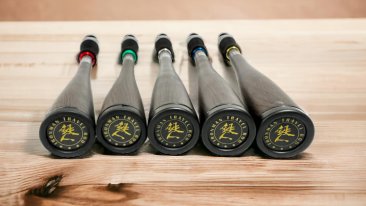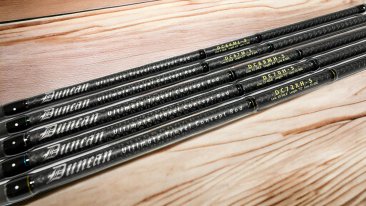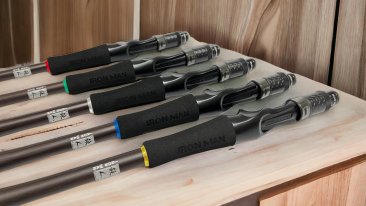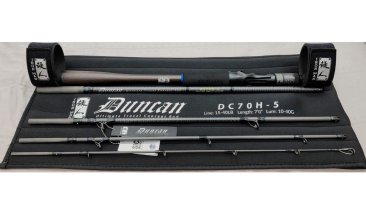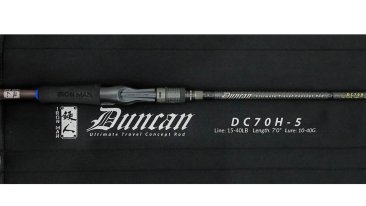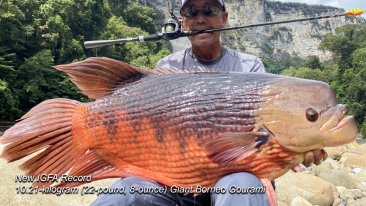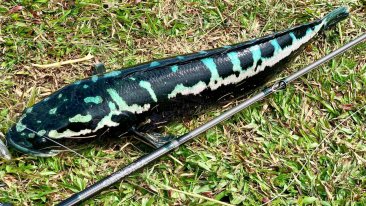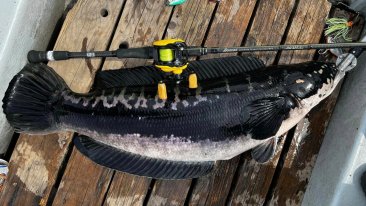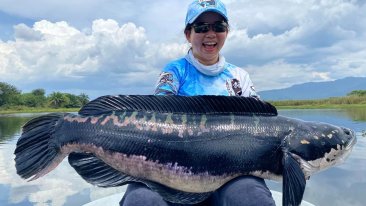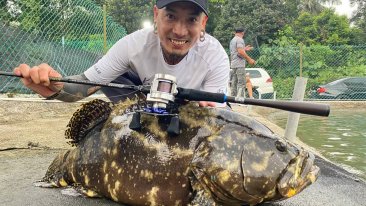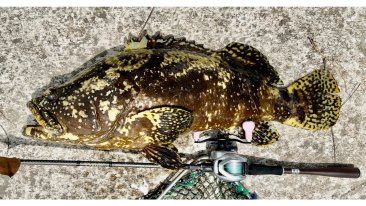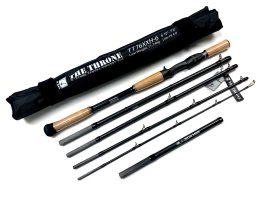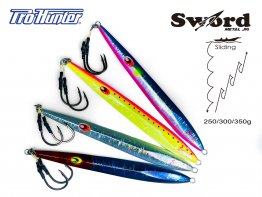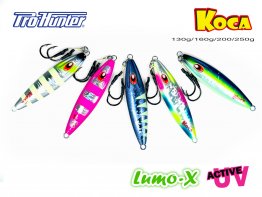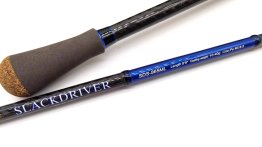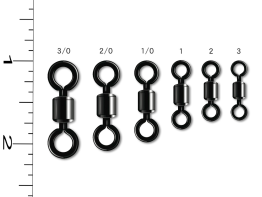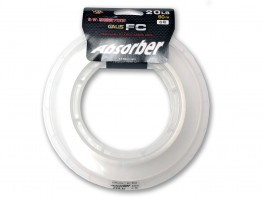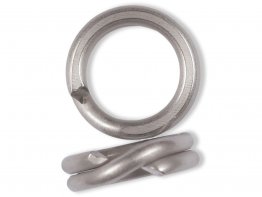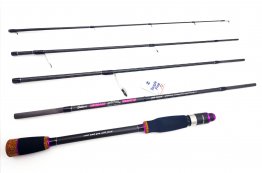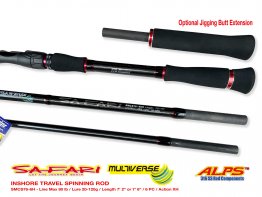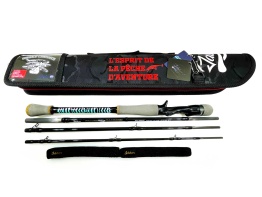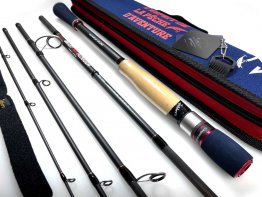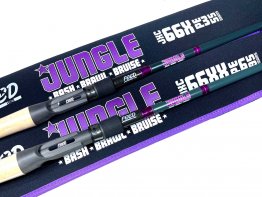Ironman DUNCAN Travel Rods
-
Rod Care
Please Read Section on Common Sense Use and Care of Multi-Section Rods
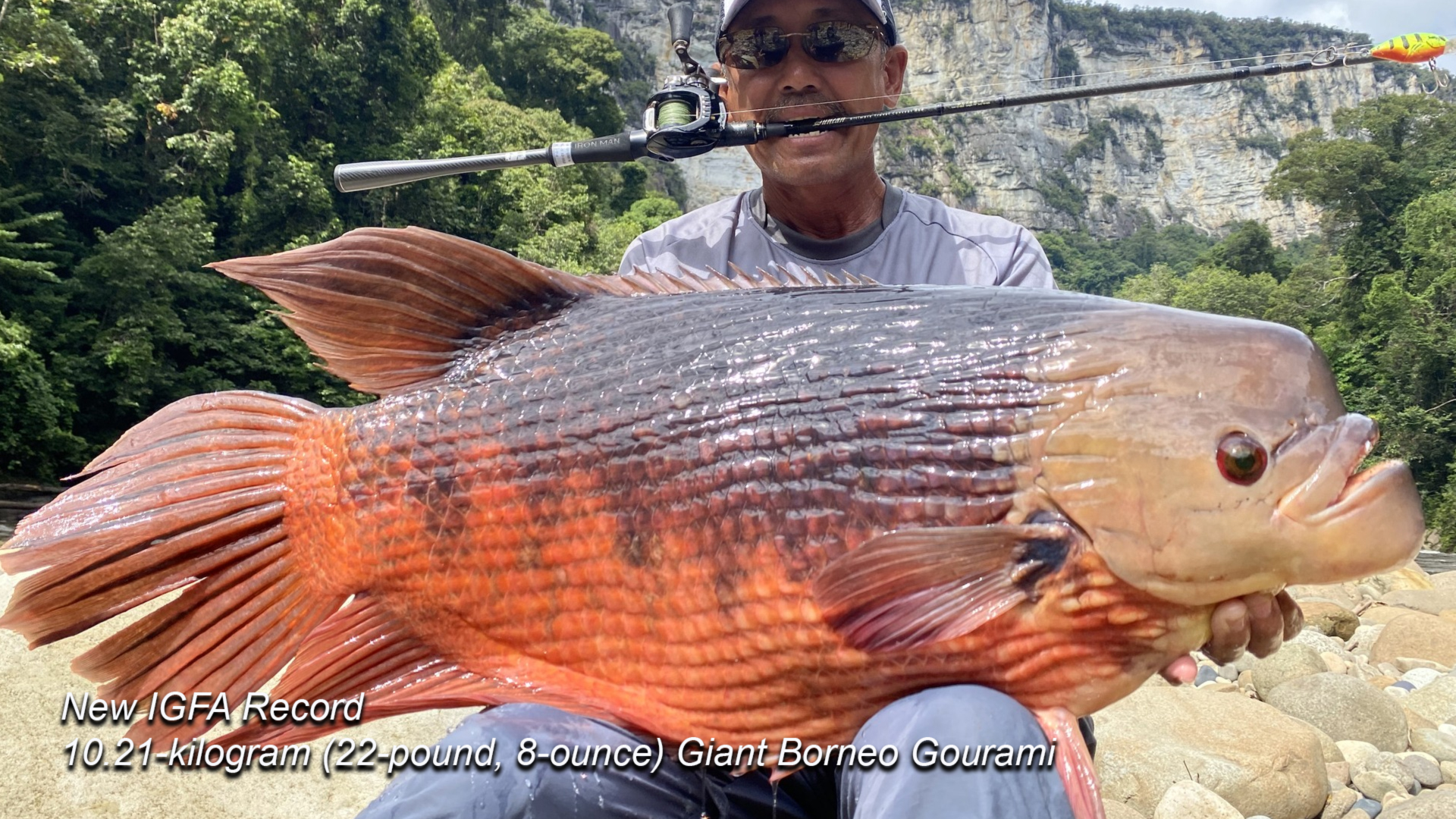
Introducing the new Ironman Duncan Travel Rods. DUNCAN is a new series of premium travel
rods designed specifically for shore, heavy cover and 'low on water' under handed casting. Constructed with high-end high- modulus carbon material over wrapped with "TORAY" 4-axis carbon fibre fabric to produce a fast action rod with a stiff backbone and to prevent blank twisting. The upper part of the blank is wrapped with "TORAY" 1K woven fabric and fitted with FUJI single foot guides to maintain its sensitivity. The rear handle is fitted with wood laminated carbon, FUJI Reel Seat with EVA and gold-colored engraved Iron Man logos.
Duncan has a range of length from 6'6" to 7'2" enables angler for long casts and each model has different color coded trims to differentiate the different models.
Mr. Ng Yam Pin, the founder of Iron Man Travel DC70H-5 Rods, has landed and awarded IGFA
World Record with a 28lb Snakehead and 22lb 8oz Giant Borneo Gourami using
DUNCAN prototype travel rods.
Iron Man Travel rods take multi-piece travel rods to a whole different level. Gone are the days when you have to sacrifice power, action, durability and quality for the sake of having a portable travel rod you can fit in your carry on luggage. Longest breakdown length is 22". Tried, tested and proven all over the world on PNG Black Bass to Amazonian Peacock Bass, Giant Colombian Catfish and 80#+ Giant Pacu, Ironman Travel rods are now available.
Designed with top shelf components like Fuji Concept guides and reel seats, each and every Ironman Travel Rod is throughly checked and load tested before being delivered to dealers. They feature registration marks at the joints to ensure that all the guides line up correctly before you start fishing with them. Comes in a padded sleeved bag with individual compartments for each piece.
It is important to occasionally check that all joints are secure during a day of hard fishing as loose joints can result in premature failure of the rod. Available in 6 popular configurations rating from 8lb to 85lb class line. See section on rod care.
All sections are available to re-order so you don't have to buy a complete rod if you break just one section.
Thank-you for your purchase. Even if you have a fully warranted rod. Common sense rules for its proper use and care.
Assembly:
Pre-assemble sections by slowly aligning and slowly rotating sections into each other. Do not snug up connections yet.
Once assembled, align the sections by sighting along the rod and rotating sections to ensure that the guides are all aligned correctly. The sections of all the rods we ship have been checked to ensure that they fit correctly. A thin layer of wax has also been applied to ensure that the sections do not get stuck together after prolonged use.
Once aligned, snug up sections firmly. The rods are designed to have AT LEAST 70% of the exposed male portions fit inside the female part when snug. DO NOT force or jam sections together excessively.
Disassembly:
Method #1:
Slowly rotate AND pull the sections apart. DO NOT EVER use the guides for leverage. Utilize the grippy rubber side of the supplied rod straps if additional grip is needed to pull and rotate sections apart. A pair of disposable nitrile gloves comes in very handy for this as well. If the sections are difficult to take apart, a second person may be needed. In this situation it is best if each person has one hand on each of opposite sections. NOT both hands on one section. Once positioned, both persons will slowly rotate and pull the sections apart in unison. Apply 70% pressure to rotating and 30% pressure to pulling the sections apart.
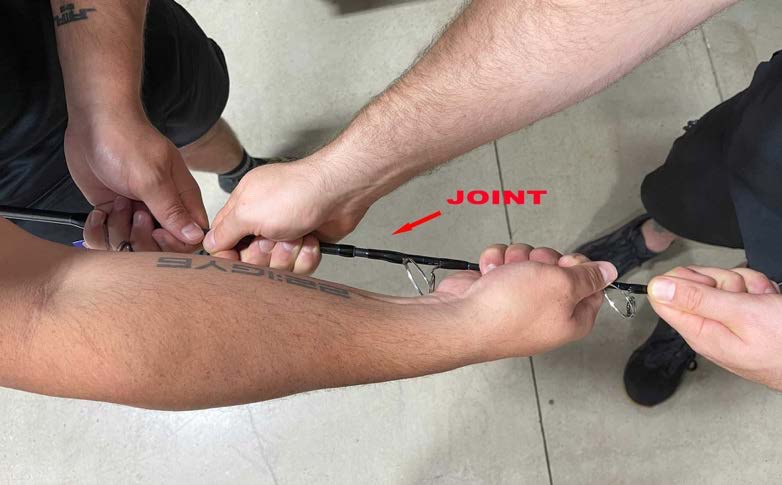
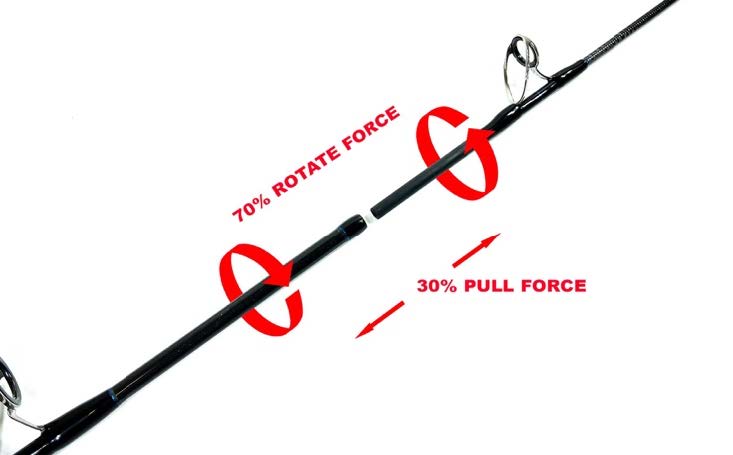
Method #2
Using the neoprene side of the rod straps(or any grippy material), wrap the straps around each of the sections to be removed. (!Make sure to not place any pressure on the guides!). Using a firm grip on each section, place the rod behind your knees and slowly spread you knees apart until the sections are separated.


Care and Maintenance
• Ferrules . . . these are normally hardy connection joints that do not require a lot of attention. Apply a thin coat of wax or dry soap to
the male ferrule to ease assembly and disassembly. We’ve found that common lip balm works very well. Clean the connections
after each use and ensure that there is no excessive build up of wax or debris. The ferrules are not designed to fit all the way. So
do not force them in too tight. Over time and use, they will snug in further. So do not attempt to sand the male sections so they fit
further into the female sections. It is important over an extended period of fishing to check that the joints are snug. One of the major
causes of failures is due to sections coming apart during the course of fishing.
• Guides . . . Check the integrity of your guides by "sighting" down the assembled rod so you can see bent or misaligned guides;
minor bends or twists in guides can usually be corrected with careful pressure; do not use "toothy" pliers on guides as they will
leave rough areas that will damage lines; otherwise, keeping guides free of debris and dirt is a periodic duty. NEVER use the
guides as leverage when twisting, aligning or disassembling rod sections. Misaligned guides during fishing are usually an indicator
of sections coming loose and need to be snugged back in. Loose sections are a common cause of rod failure.
• Guard against knicks . . . It is best to avoid colliding your rods with sharp objects, such as hooks, rocks, split shot, etc.; these and
other impacts can damage the rod's fibers (regardless what the rod is made of) and encourage breakage at the weakened spot.
• Immovable objects . . . No rod is meant to be used as a lever in a stubborn attempt to move the immovable; if your line is caught on
something, do not use the rod to jerk on the line; rather point the rod in a straight line toward the source of the snag and pull
steadily until the lure or leader breaks.
• Rod pressure . . . When fighting large fish or strong current, use the rod in a sideways angle as opposed to straight upright; this
lessens strain on the rod and is often a better tactical position. ALWAYS avoid ‘High Sticking’. It is also important during the course
of fishing to check on the snugness of all the joints of the rods. One of the most common causes of breakage is the ferrules coming
loose during fishing.
• Cleaning . . . Rinse and wipe your rod off after each use before storage; if used in saltwater, be sure to wash it off with freshwater
and allow it to air dry before storage; do not store a wet rod in an enclosed area or sealed container, as it can mildew handles and
cause swelling/rotting of the cork.
• Storage . . . store each of your rods, and each section singly in (a) a cloth rod bag and (b) a hard rod case; (we favor the tips of
both the butt and sections of our rods facing downward in these cases to protect them). Do not store rods in excessive heat, e.g.,
trunk of your car. Do not store away wet rods.
• Chemicals . . . Avoid exposing rods and cases to harsh chemicals such as petroleum products, insect repellent, etc.



